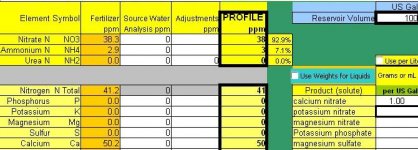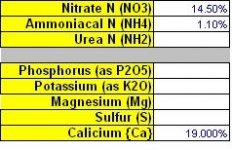D
DonkDBZ
Agree with YS. Donk are you using Spurrs recipe and adding Big Bud, and Bud Candy and Si K? What medium are you in? Looking good.
I am running 80-90% chunky perlite and 10-20%coco. In 20 gallon smart pots. I watered twice a day by hand. Then once i got off my ass I made the drip system. Once I did that and set watering to 9 times a light cycle they blew up.
Spurr want do you think about .5 m/ gallon of pure flowers to your recipe later bloom. Since its really a K boost and SAR.
The turf grass studys show it takes a year for the P to be use able. So would it mess up the ratios?




 , my bad.
, my bad. 
